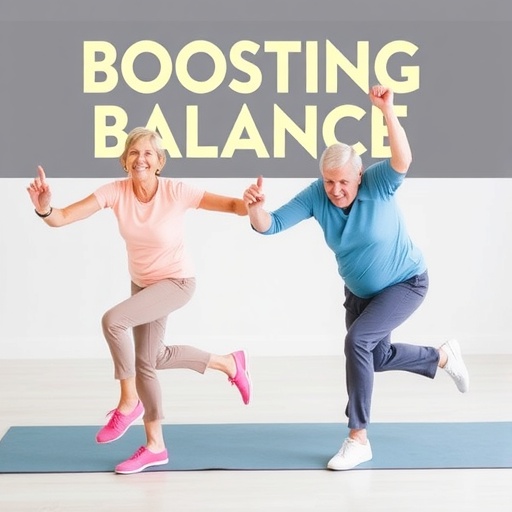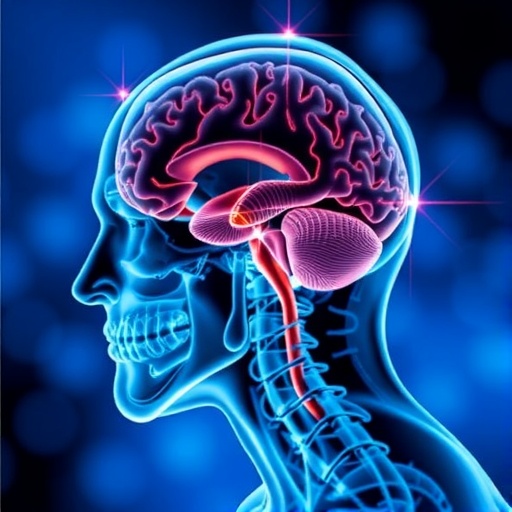A recent systematic review and meta-analysis conducted by Khan et al. investigates the multifaceted approach of dual-task exercise as a means to enhance balance and mitigate fall risk among older adults. With the aging population increasing globally, the need for effective interventions to promote independence and mobility in elderly individuals has never been more urgent. This study sheds light on the profound impact that engaging both cognitive and physical tasks can have on the overall stability of older individuals, potentially reshaping the paradigms of elderly health and fitness programs.
The cornerstone of this research lies in recognizing that falls are one of the leading causes of injury and mortality among older adults. These incidents often result in a decline in physical ability, leading to further complications and a diminished quality of life. By employing a dual-task approach, the researchers aimed to address not only the physical limitations faced by older individuals but also the cognitive demands required for maintaining balance. Such dual-task exercises could provide a more comprehensive pathway for enhancing functional capacities in this vulnerable demographic.
The meta-analysis comprised a meticulous review of numerous studies assessing the efficacy of dual-task interventions versus single-task exercises. The findings are compelling, indicating that participants engaged in dual-task exercises exhibited a significant improvement in balance metrics compared to those who solely performed single-task physical activities. This improvement was not merely statistically significant; it points to a transformative strategy in the rehabilitation and fall prevention sector for older adults.
The research emphasized the importance of cognitive engagement in balance training. Notably, the cognitive component of these exercises can range from simple tasks, such as counting backwards, to more complex ones like navigating conversations or reacting to environmental stimuli. Engaging the brain while performing physical exercises appears to create a synergistic effect that enhances both cognitive functioning and physical stability. This dual engagement seems particularly crucial as it mirrors everyday challenges that seniors face, where they must multitask and stay alert while performing routine activities.
Moreover, the systematic review highlighted the varied nature of dual-task exercises, suggesting that there is no one-size-fits-all approach. Tailoring these interventions to meet the individual needs and capabilities of older adults can maximize their effectiveness. This personalized approach ensures that each participant is challenged without being overwhelmed, thus fostering a more positive experience and encouraging long-term adherence to exercise regimens.
An essential aspect of the study is its robust meta-regression analysis. This statistical technique allowed researchers to explore the different variables influencing the effectiveness of dual-task exercises in various populations. Factors such as the frequency of exercise, the intensity of cognitive tasks, and the duration of the intervention were scrutinized in detail. This depth of analysis underscores the complexity of designing effective programs for fall prevention and balance improvement.
The implications of these findings are broad. For healthcare professionals and geriatric care providers, integrating dual-task training into rehabilitation protocols could be revolutionary. With clear evidence supporting its efficacy, practitioners are better equipped to offer interventions that not only aim to prevent falls but also promote overall cognitive and physical health among older adults. This holistic approach might significantly reduce the burden of falls-related injuries on healthcare systems, ultimately enhancing the quality of life for countless older individuals.
As communities continue to grapple with the challenges posed by an aging population, adopting evidence-based strategies like dual-task exercises can have widespread beneficial effects. Public health campaigns and community programs could be designed to promote these activities, further encouraging active participation from older adults. Such initiatives could facilitate social interactions and enhance community ties, which are crucial for the mental health and well-being of older individuals.
In conclusion, the systematic review conducted by Khan et al. presents compelling evidence regarding the effectiveness of dual-task exercise interventions in improving balance and reducing fall risk among older adults. This innovative approach harnesses the power of cognitive engagement to enhance physical stability, offering a promising avenue for fall prevention strategies. As the research community continues to explore methods for promoting healthy aging, the insights gleaned from this study pave the way for more refined and impactful practices that can help safeguard the independence and quality of life for older adults worldwide.
The findings thus represent a significant leap forward in geriatric exercise science. By advocating for and implementing dual-task exercises in rehabilitation and fitness programs, we can empower older adults to take control of their health and live more fulfilling, active lives. This integration of cognitive and physical activity not only increases balance and reduces fall risk, but it also enriches the daily experiences of our aging population, encouraging both mental and physical resilience.
In closing, the research conducted by Khan et al. has set a precedent in enhancing our understanding of how dual-task exercises can be effectively employed to support older adults. As we continue to navigate the challenges posed by an aging society, embracing innovative approaches like these could be key to promoting longevity, independence, and improved quality of life. Ultimately, the quest for healthier aging is a shared responsibility, and leveraging evidence-based practices will be crucial in achieving our goals as a society.
Subject of Research: Effectiveness of dual-task exercise in improving balance and preventing falls among older adults.
Article Title: Effectiveness of dual-task exercise in improving balance and preventing falls among older adults: systematic review with meta-analysis and meta-regression.
Article References:
Khan, M.J., Fong, K.N.K., Wong, T.WL. et al. Effectiveness of dual-task exercise in improving balance and preventing falls among older adults: systematic review with meta-analysis and meta-regression.
Eur Geriatr Med (2025). https://doi.org/10.1007/s41999-025-01328-3
Image Credits: AI Generated
DOI: https://doi.org/10.1007/s41999-025-01328-3
Keywords: Dual-task exercise, balance improvement, fall prevention, older adults, cognitive engagement, rehabilitation, systematic review, meta-analysis.
Tags: cognitive and physical tasks for older adultscognitive demands of balance exercisescomprehensive exercise programs for seniorsdual-task approach for stabilitydual-task exercises for seniorselderly health and fitness programsenhancing balance in elderlyfall risk reduction strategiesimproving mobility in aging populationinterventions for fall preventionpromoting independence in older adultssystematic review of dual-task interventions





